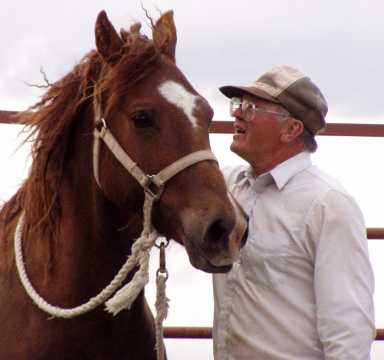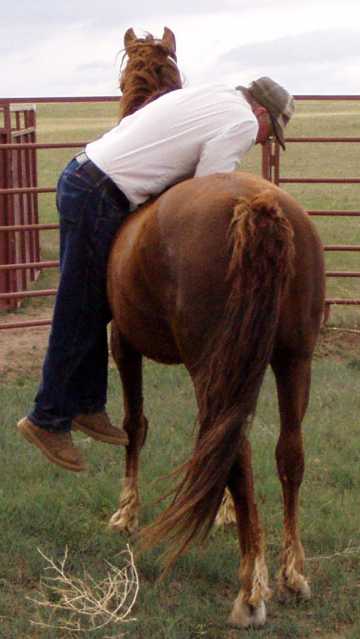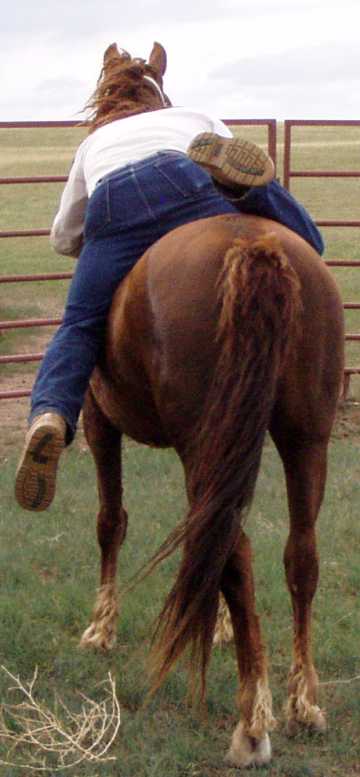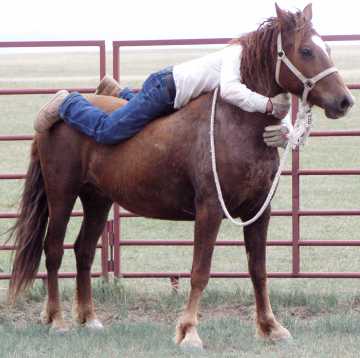If you wish to focus on building a relationship with a horse, then we have the right horse and the question becomes, “ are you the right person”?
Dating Service for Horses:
Like Match.com, eHarmony and Zoosk, we strive to match the horse and human on compatibility. As the founder of eHarmony says in the bridesmaid commercial “do you want fast, or do you want forever?”
We believe as does Pat & Linda Parelli that every horse has its own Horsenality. Throw in the personality of the human and it makes no sense to choose a horse based on the number of hours someone has put into riding. It is our belief that the key to a great relationship between a horse and its human is matching the two based on compatible ‘nalities.
And while all of this is true, we also take into account the physical abilities of both horse and human as well as the color, age and size preferences of the human for their potential horse. However, unlike horse traders we will not sell a horse to a person if we do not firmly believe the two can make a strong team.
Our Philosophy:
A few years ago at a demonstration Clinton Anderson said that the best matches are green horses with green humans. We agreed then and even more so now. Add to this Chris Cox’s belief that humans and horses can be partners and we have created our own formula for horse/human success.
Making it Work:
Guy McLean says he truly believes that the best tools in horsemanship are ‘Knowledge, Compassion, Patience and Imagination” and in using these, many a fine partnership has been formed. McLean also says “training is about expectations”. Therefore, we take a person willing to expect greatness from themselves, willing to expect the good, the bad and the ugly from themselves and willing to expect honest tries from their horse and combine them with a horse that has learned to trust, to respect and to learn, throw in a dash of patience & imagination and this is our recipe for success.
“training is about expectations”.
However, our recipe finds greatest success with the person who does not know all the answers, is able and willing to accept criticism and who understands the horse is a mirror of themselves thus if there is a problem they need to look to themselves.
Our horses are bred and developed so they want to learn:
Our horses are bred for intelligence and soundness. They are then developed in a manner that shows them how to learn. For us, when one of our horses graduates from our kindergarten it is a simple matter to move forward with their training towards whatever discipline is desired.
Growing the horse and the human together:
However, our horses are not sold as finished products. As is proven time and time again, give a finished horse to a green person and within days that horse will be as ‘green’ as the human. This occurrence leads to frustration for both the horse and the human. On the horses part this frustration is often expressed in undesirable and even dangerous behaviors.
“I believe that people should learn to work with their horses. If you have someone else train her, you will only be wasting money as you will revert back to old habits and lose the training you paid for.” April Reeves, Horseman’s U.com
An honest ‘horse trainer’ will tell you that many of the horses they train (re-train) are horses that were ‘finished’ to perfection and back slid to their new owner’s level. We do not believe this is in the best interest of either the horse or the human and thus prefer to work with people who are as open and willing to learning as the horses we produce.
We believe, as does Chris Cox, in “building confidence through knowledge”. This applies to both the human and the horse. Too often, humans look upon animals as a tool or a possession and forget that this is a living breathing being with feelings and a mind and the ability to become the best friend a human has ever had the good fortune to possess.
Demonstrating our methods:
As previously stated, we expect a lot of our horses. To demonstrate this, we made a couple of videos with youngsters who have been in hand a total of 2 months. In this two months they have come in close contact with humans for the first time; experienced the restraint of halter, lead and tether; learned to understand the human’s language and learned to look to the human for the answers. The next step is finding the humans who are as open to learning and as honest as are these horses.
Don demonstrates how we start a horse by jumping on this horse for the first time after the horse had been running in a 480 acre field with 20+ other horses. Crazy? Dangerous? Maybe. But because we have faith in our foundation and our breeding we do not feel starting a horse in this manner is as dangerous as stepping up on many an “old broke, bomb proof” horse. Too often horses sold as bomb proof kid horses have a glaring problem that only appears under a certain set of circumstances and that circumstance is NEVER at a good time for horse or human.
We believe all horses should be started in this manner because we are firm believers that a horse should be trained and not forced. All of our horses start bareback with a halter and lead rope. The human needs to ‘crawls’ all over the horse using themselves as “human curry combs” as Clinton Anderson says to familiarize the horse with human contact on different parts of its body. As seen here, this is done with no restraint and the horse is expected to stand calm and steady. A dismount may not always be perfect, so Don uses a slide and hang combination to insure the horse is stable in case of emergency.
How to pick a trainer?
Training may be in person, via video, books, television or the internet; however, the trainer should demonstrate:
- a willingness to take the time needed to develop the human as well as the horse
- principals that agree with yours
- a willingness to learn as well as teach
- the ability to adjust training style to match horse personality
- the ability to effectively/clearly communicate with the horse and the human
- a recognition of the importance of foundation and ground work






